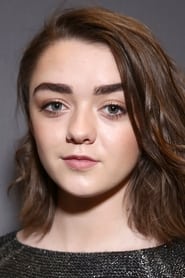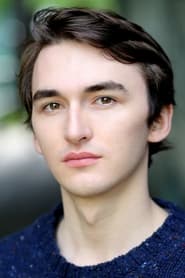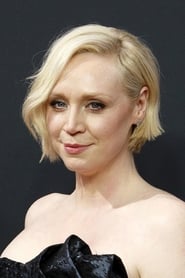
Ask Your Own Question
What is the plot?
Sorry, we aren't able to watch and write up a full detailed plot yet. Check back in a few days.
What is the ending?
In the episode "Creating the Visual Effects: Season 4 (Shock and Awe)," the focus is on the behind-the-scenes work that went into the visual effects of Season 4 of Game of Thrones. The episode does not have a traditional narrative ending with character fates, as it is a documentary-style special that showcases the artistry and technology behind the visual effects used in the series.
As the episode unfolds, it begins with an introduction to the visual effects team, highlighting their creative process and the challenges they faced in bringing the world of Westeros to life. The team discusses the importance of blending practical effects with CGI to create a seamless viewing experience.
Scene by scene, the episode dives into specific sequences from Season 4, such as the epic battle scenes and the dramatic moments involving dragons. The visual effects team shares insights into how they created the stunning visuals of the dragons flying over the skies of Westeros, emphasizing the meticulous attention to detail required to make these creatures appear lifelike.
The episode also features interviews with key cast members and crew, who reflect on their experiences during the filming of these visually striking scenes. They discuss the emotional weight of the storylines and how the visual effects enhance the overall impact of the narrative.
As the episode progresses, it showcases the transformation of certain scenes from raw footage to the final product, illustrating the extensive work that goes into each frame. The team highlights the collaborative effort between the directors, cinematographers, and visual effects artists to achieve the desired look and feel of the series.
In conclusion, "Creating the Visual Effects: Season 4 (Shock and Awe)" serves as a tribute to the hard work and creativity of the visual effects team, celebrating the artistry that contributes to the storytelling of Game of Thrones. The episode ends with a sense of accomplishment, showcasing the successful integration of visual effects that have become a hallmark of the series, but it does not provide a traditional narrative resolution or character fates, as it is focused on the behind-the-scenes process rather than the story itself.
Is there a post-credit scene?
In the episode "Creating the Visual Effects: Season 4 (Shock and Awe)" from the Game of Thrones specials, there is no post-credit scene. The episode focuses on the behind-the-scenes processes and techniques used to create the stunning visual effects that characterized Season 4 of the series. It delves into the artistry and technology that brought to life the epic battles, dragons, and other fantastical elements of the show, showcasing interviews with the visual effects team and clips from the season. The episode concludes without any additional scenes or content after the credits.
What specific visual effects were used to create the dragons in Season 4?
The visual effects team utilized a combination of CGI and practical effects to bring the dragons to life. They focused on creating realistic textures and movements, ensuring that the dragons appeared both majestic and terrifying. The team studied real animals and incorporated their movements into the animation, giving the dragons a sense of weight and presence.
How did the visual effects enhance the Battle of Castle Black?
The visual effects played a crucial role in depicting the scale and chaos of the Battle of Castle Black. The team created sweeping shots of the Wall, showcasing the massive scale of the structure and the hordes of Wildlings attacking it. Explosions, arrows flying through the air, and the use of snow and ice effects added to the intensity of the battle, immersing viewers in the action.
What challenges did the visual effects team face when depicting the White Walkers?
The visual effects team faced significant challenges in creating the White Walkers, particularly in making them appear both otherworldly and menacing. They experimented with different textures and lighting to achieve their icy appearance, and the animation of their movements was designed to be unnaturally fluid, enhancing their eerie presence on screen.
How did the visual effects contribute to the emotional impact of the scene where Joffrey is poisoned?
The visual effects team enhanced the emotional impact of Joffrey's poisoning by focusing on the subtle details of his facial expressions and the reactions of those around him. The use of close-up shots, combined with the visual effects of the wine spilling and the sudden change in Joffrey's demeanor, created a shocking and dramatic moment that resonated with viewers.
What techniques were used to create the wildfire explosion during the Battle of Blackwater?
To create the wildfire explosion, the visual effects team combined practical effects with CGI. They filmed controlled explosions and then enhanced them digitally to achieve the bright green flames associated with wildfire. The team also focused on the shockwave and debris effects, ensuring that the explosion felt impactful and chaotic, reflecting the devastation it caused.
Is this family friendly?
"Creating the Visual Effects: Season 4 (Shock and Awe)" is a behind-the-scenes special that focuses on the visual effects used in the fourth season of "Game of Thrones." While it does not contain traditional narrative content, it does discuss and showcase various elements that may be objectionable or upsetting for children or sensitive viewers.
-
Graphic Visual Effects: The special includes discussions and clips of battles, including scenes of violence and death, which may be intense or disturbing.
-
Themes of War and Conflict: The focus on the brutal realities of war, including the emotional toll on characters, may be heavy for younger audiences.
-
Depictions of Destruction: Visuals of large-scale destruction, such as burning cities or devastated landscapes, may evoke feelings of sadness or fear.
-
Mature Themes: The special touches on themes of power, betrayal, and loss, which may be complex and difficult for younger viewers to fully understand.
-
Realistic Effects: The realism of the visual effects, including blood and injury, may be unsettling for sensitive viewers.
Overall, while the special is informative and focuses on the artistry of visual effects, it does contain elements that may not be suitable for all audiences, particularly children.
























